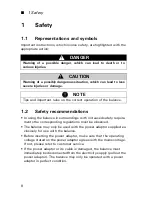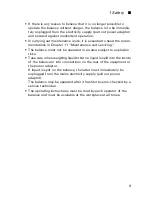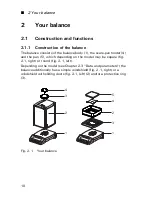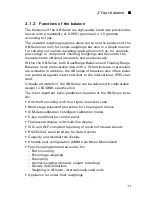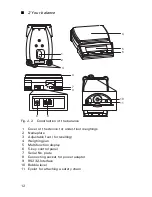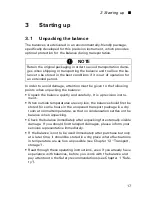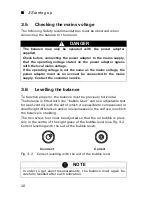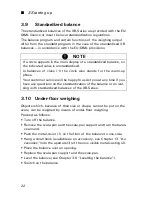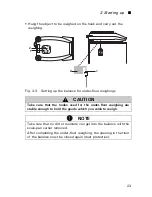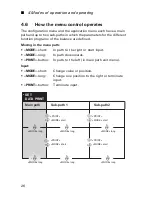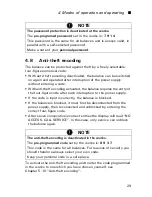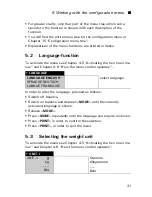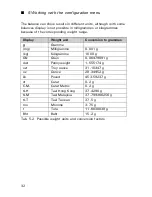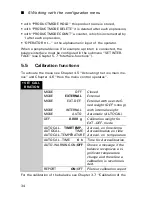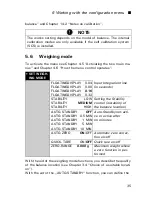
3 Starting up
■
21
3.7
Calibration of the balance
Since the Earth's gravity is not the same everywhere, each balance
must – in accordance with the underlying physical weighing principle
– be adjusted to compensate for the gravity at each location. This
adjustment process, known as “calibration”, must be carried out on
initial installation and after each subsequent relocation. In order to get
exact measurements, it is recommended moreover, that the balance
should also be calibrated intermittently during the weighing operation.
The setting of the calibration is effected in the configuration menu.
Depending on the model of balance, this may be done externally, in-
ternally or automatically (see Chapter 5.5 “Calibration functions”).
With the aid of the “Intelligent Calibration Mode” ICM the balance can
itself determine the size of the calibration weight, which enables an
exact calibration with different size weights (in 10 g, 50 g, 100 g and
500 g steps, depending on implementation).
3.8
Dual Range and Floating Range balances
With the Dual Range balances, weighing is always first carried out in
the small, more exact range. Only when the small range is exceeded
will the balance switch automatically into the bigger range.
The Floating Range balances have a 10-fold more precise fine range,
which is movable over the entire weight range. By pressing the tare
key «
T
» the fine-area can be called up as often as required over the
entire weight range.
NOTE
Warm-up time: We recommend to connect the balance to the mains
at least for 2-3 hours (classI) resp. 1 hour (class II) before use.
NOTE
The balance must be calibrated on initial installation and after every
relocation.
If you work in accordance with “Good Laboratory Practice GLP” ob-
serve the prescribed intervals between calibrations (adjustments).


